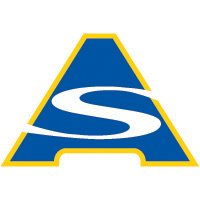What do they do?
Operate or tend hoists or winches to lift and pull loads using power-operated cable equipment.
Also known as:
Hoist Operator, Hoistman, Material Handler, Service Operator, Winch Derrick Operator
-
4%
Change
Select a state to see its job growth rate ranking600Job Openings
Select a state to see its net job growth ranking
-
State Technical College of Missouri
Linn, MO
-
Pittsburgh Institute of Aeronautics
West Mifflin, PA
-
SUNY College of Technology at Alfred
Alfred, NY
-
Pennsylvania College of Technology
Williamsport, PA
-
Putnam Career and Technical Center
Eleanor, WV
Looking for colleges that offer a specific major? Use the College Match Tool to find your best-matched schools and discover your estimated Net Price!
- Doctorate or Professional Degree (<1%)
- Master's degree (1%)
- Bachelor's degree (2%)
- Associate's degree (6%)
- Some college, no degree (21%)
- High school diploma equivalent (57%)
- Less than high school diploma (14%)
People in this career often have these skills:
- Critical Thinking - Using logic and reasoning to identify the strengths and weaknesses of alternative solutions, conclusions, or approaches to problems.
- Monitoring - Monitoring/Assessing performance of yourself, other individuals, or organizations to make improvements or take corrective action.
- Operations Monitoring - Watching gauges, dials, or other indicators to make sure a machine is working properly.
- Time Management - Managing one's own time and the time of others.
- Active Listening - Giving full attention to what other people are saying, taking time to understand the points being made, asking questions as appropriate, and not interrupting at inappropriate times.
- Operation and Control - Controlling operations of equipment or systems.
People in this career often have talent in:
- Problem Sensitivity - The ability to tell when something is wrong or is likely to go wrong. It does not involve solving the problem, only recognizing that there is a problem.
- Arm-Hand Steadiness - The ability to keep your hand and arm steady while moving your arm or while holding your arm and hand in one position.
- Control Precision - The ability to quickly and repeatedly adjust the controls of a machine or a vehicle to exact positions.
- Reaction Time - The ability to quickly respond (with the hand, finger, or foot) to a signal (sound, light, picture) when it appears.
- Depth Perception - The ability to judge which of several objects is closer or farther away from you, or to judge the distance between you and an object.
- Multilimb Coordination - The ability to coordinate two or more limbs (for example, two arms, two legs, or one leg and one arm) while sitting, standing, or lying down. It does not involve performing the activities while the whole body is in motion.
- Near Vision - The ability to see details at close range (within a few feet of the observer).
- Oral Comprehension - The ability to listen to and understand information and ideas presented through spoken words and sentences.
- Oral Expression - The ability to communicate information and ideas in speaking so others will understand.
- Deductive Reasoning - The ability to apply general rules to specific problems to produce answers that make sense.
- Selective Attention - The ability to concentrate on a task over a period of time without being distracted.
- Manual Dexterity - The ability to quickly move your hand, your hand together with your arm, or your two hands to grasp, manipulate, or assemble objects.
- Speech Recognition - The ability to identify and understand the speech of another person.
People in this career often do these activities:
- Operate cranes, hoists, or other moving or lifting equipment.
- Monitor equipment gauges or displays to ensure proper operation.
- Maintain material moving equipment in good working condition.
- Move materials, equipment, or supplies.
- Position material handling equipment.
- Climb ladders or vehicles to perform duties.
- Select project materials.
- Load shipments, belongings, or materials.
- Communicate with others to coordinate material handling or movement.
- Connect cables or electrical lines.
This page includes data from:

 Occupation statistics: USDOL U.S. Bureau of Labor Statistics Occupational Employment Statistics
Occupation statistics: USDOL U.S. Bureau of Labor Statistics Occupational Employment Statistics








